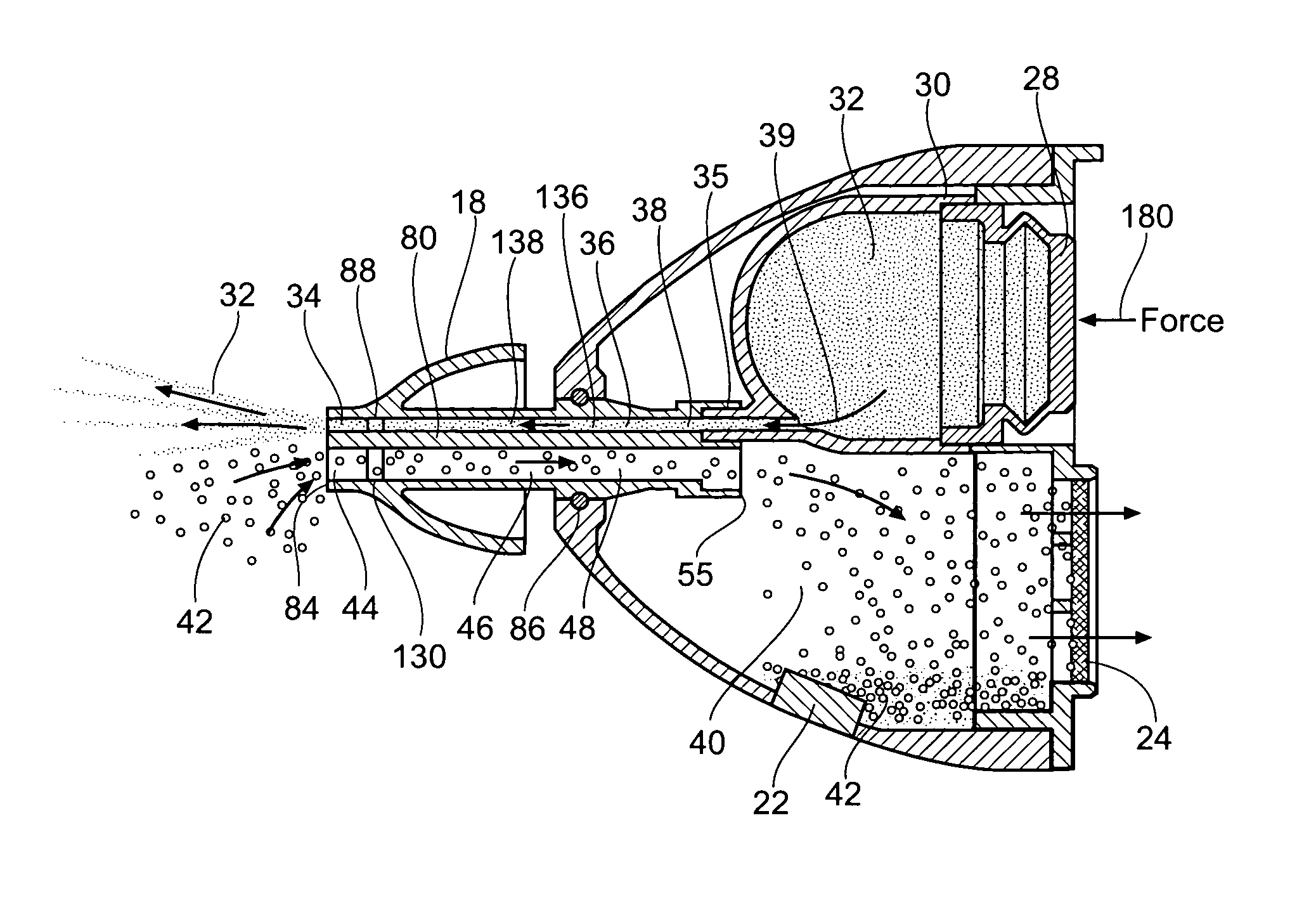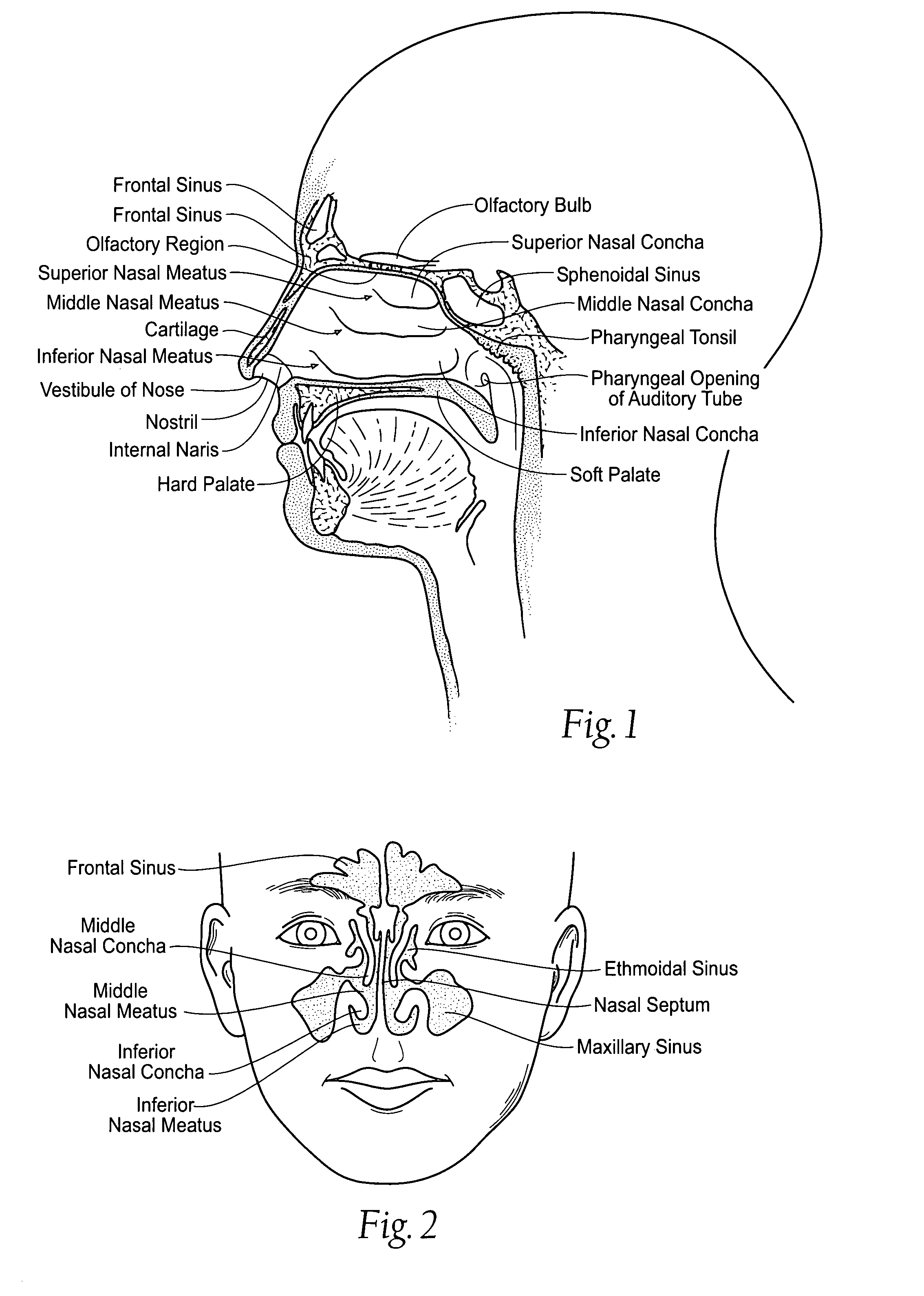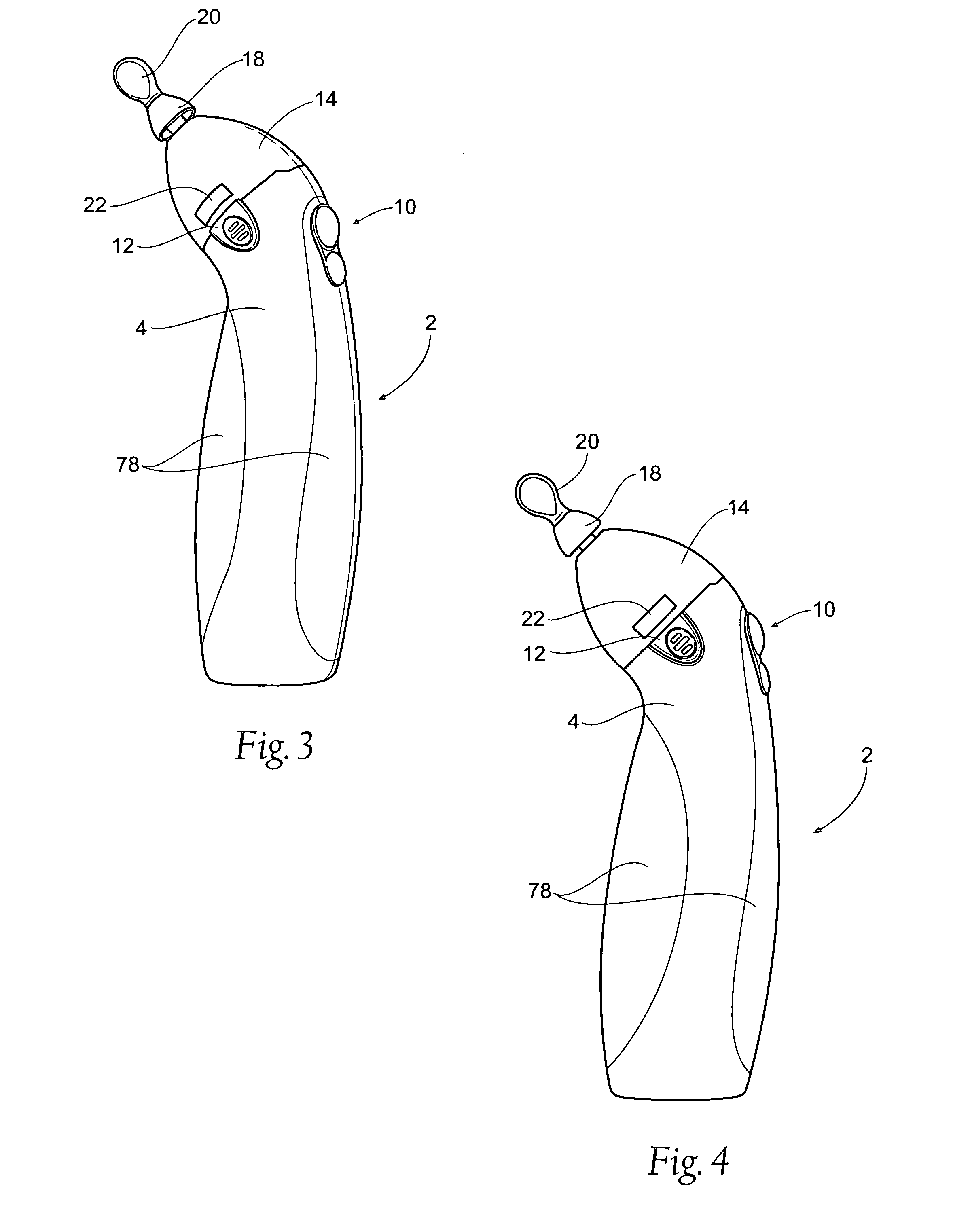Irrigation and aspiration devices and methods
a technology of irrigation device and aspiration chamber, which is applied in the field of medicine, can solve the problems of poor sleeping and feeding in infants, general discomfort and malaise in adults, and congestion in the nasal cavity, and achieve the effect of improving pump efficiency and increasing flow per strok
- Summary
- Abstract
- Description
- Claims
- Application Information
AI Technical Summary
Benefits of technology
Problems solved by technology
Method used
Image
Examples
Embodiment Construction
[0093]Although the disclosure hereof is detailed and exact to enable those skilled in the art to practice the invention, the physical embodiments herein disclosed merely exemplify the invention which may be embodied in other specific structures. While the preferred embodiments have been described in relation to use at the nostrils to provide relief within the nasal and sinus cavities, the details may be changed without departing from the invention, which is defined by the claims. Still, it should be appreciated that the devices and methods that embody features of the invention are also adaptable for use at any site or cavity where either or both irrigation and aspiration may be beneficial.
[0094]When referring to an irrigation and aspiration device that is manipulated by a physician or operator in order to irrigate and / or aspirate a site or cavity, the terms “proximal” and “distal” may be used to describe the relation or orientation of the device with respect to the operator as it is...
PUM
 Login to View More
Login to View More Abstract
Description
Claims
Application Information
 Login to View More
Login to View More - R&D
- Intellectual Property
- Life Sciences
- Materials
- Tech Scout
- Unparalleled Data Quality
- Higher Quality Content
- 60% Fewer Hallucinations
Browse by: Latest US Patents, China's latest patents, Technical Efficacy Thesaurus, Application Domain, Technology Topic, Popular Technical Reports.
© 2025 PatSnap. All rights reserved.Legal|Privacy policy|Modern Slavery Act Transparency Statement|Sitemap|About US| Contact US: help@patsnap.com



